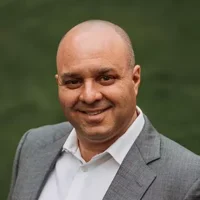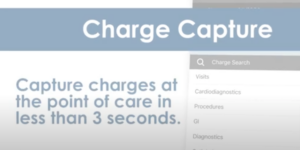Medical providers have been faced with the harsh reality of reduced time with direct patient care. The transition has been gradual, with documentation and clerical requirements supplanting time spent on history and physical exam. The current paradigm dictates that if it isn’t documented, it didn’t happen. Also, without adequate documentation, getting paid for your work becomes more difficult. Any tool or process redesign that results in more time for clinical decision-making or face-to-face interaction, is going to by default improve quality of care.
Find the Weak Spots
Go for the low-hanging fruit first. It is not advisable to tear down your entire process and rebuild – too disruptive and will lead to massive heartburn. Your inpatient and outpatient workflows have certain areas, however, which if designed differently, would result in gained time. For the office setting, sometimes it is as simple as changing intake forms or having medical assistants input certain information. I’ve personally benefited from having my support staff gather as many labs and outside reports prior to patient visits, so that I do not waste precious time looking, or leaving the room asking my staff to seek it out. In the inpatient setting the low-hanging fruit is plentiful. Without support staff by my side, and without a set schedule, rounding at the hospital tends to be more of a free-for-all. And with that loose structure comes inefficiencies. Communication is a great example. Providers need to be in constant communication with each other to figure out which patients need to be seen, which have already been seen, and when new business comes in. I can’t count the wasted hours texting and calling. And don’t get me started on weekend sign-outs. Everything changed once we adopted charge capture & rounding software. Suddenly we were organized. Seeing the whole census and which patients had been rounded on, in real time, got rid of all of the excess communication. Weekend sign-outs became a breeze as well. Voila! Instant process improvement.
Use Your New Time Wisely
New efficiencies mean time gained. How should this time be spent? The natural instinct is to transfer it to leisure time. That should definitely happen to some extent, but let’s not race home and get into comfy clothes every day. In the outpatient world, often the urge is to see more patients in a day. The other approach is to purposefully extend the time slots for patient visits. This one is harder to do because there are external pressures on us to to see more patients. Lengthening the visit slot, knowing you have carved out extra time, translates into that extra 5 minutes taking a history, doing a more detailed physical exam, or simply getting to know your patient better. In the hospital setting you will have more time per patient as well. Reviewing records, discussing cases with colleagues, going over imaging with radiologists – all of these are hard to do when you are pressed for time. The scalability of your whole practice may change as well. Adding other facilities to the rounding list seemed impossible before, but now it can be done with the same resources.
Keep Goals Achievable
Once you get a taste of process improvement, it is contagious. You start turning to other areas in your work environment and ask, “How can I streamline this?” This is great but be careful. Not every aspect of your practice is suffering from inefficiencies. Furthermore, some processes are harder to tear down without bringing your whole operation to a grinding halt. Make sure there is a solution out there to replace the existing one, and make sure it has been proven to work – otherwise you are creating as many problems as you are solving. Also insist that all of the stakeholders are present in the discussion. If you are going to change how patients are roomed in the office, the check-in staff, medical assistants, and check-out staff all need to be involved.
The ultimate goal in healthcare is to deliver the highest quality of care possible to patients at an affordable cost. Increasing demands on provider time have pushed the envelope of bare minimums. Process improvement is vital to the sustainability of medical practices. Creating a better balance between clinical time and clerical work will ensure that quality of care never suffers.
https://hybridchart.com/wp-content/uploads/2019/11/HC-Logo-Primary.png
For A Better Hospital Rounding Experience
At HybridChart, we provide technology that connects your healthcare team, increases efficiencies, AND improves your bottom line. HybridChart’s cloud-based software adapts to your practice’s unique workflow and will improve your profitability and patient outcomes by utilizing our 5 features: charge capture, census management, secure messaging, discharge planning, and data analytics.
NEVER miss another charge and get PAID for the work you do!
If you are interested in taking your medical practice to the next level and want to employ the best hospital charge capture practice available in the industry, come visit our website at www.hybridchart.com, call us at 1-877-977-5544, or click here to schedule a demo today!






